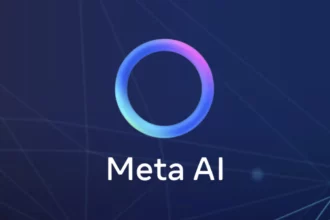The Journey from Statistical to Neural Network Language Models
Oh, the evolution of language models, from statistical to neural networks, is quite a tale! It’s like going from using a calculator to solve math problems to having a supercomputer make predictions for you! But let me break it down for you in simpler terms.
Alright, so back in the day, simple language models were designed using statistical methods like n-grams and hidden Markov models. These models were used for tasks like speech recognition and translation. But hey, they had their limitations when it came to accuracy and scalability.
Then came along neural networks with the rise of deep learning. Recurrent neural networks (RNNs) and long short-term memory (LSTM) networks stole the spotlight. These fancy models could understand relationships between words in a sentence and produce coherent responses by learning from huge amounts of data.
But wait, there’s more excitement ahead! Attention-based approaches like the Transformer architecture made their grand entrance. These models are all about focusing on specific parts of a sequence using self-attention techniques, resulting in top-notch performance in natural language processing tasks.
Saviez-vous that these advanced models don’t just read text; they understand it, thanks to their ability to capture intricate patterns in language data!
Now, let’s dive deeper into the world of probabilistic and neural network-based language models. We’ll explore how they’ve transformed the realm of natural language processing with their powerful capabilities! So buckle up and get ready for an exhilarating ride through the evolution of language models! Keep reading to uncover some fascinating insights that will leave you amazed!
Table of Contents
ToggleTransformers and Attention Mechanisms: The Modern Breakthrough
The land of Transformers and Attention Mechanisms! We’re diving into the heart of deep learning sorcery where models get to play the role of Sherlock Holmes in uncovering those hidden patterns and connections. Let’s unravel this modern breakthrough together, shall we?
- Language models have evolved from statistical methods like n-grams to neural networks like RNNs and LSTMs, improving accuracy and scalability.
- The introduction of attention-based approaches like the Transformer architecture has revolutionized natural language processing tasks by focusing on specific parts of a sequence using self-attention techniques.
- Advanced language models can understand text by capturing intricate patterns in language data, going beyond just reading it.
- Transformers with attention mechanisms have become a modern breakthrough in deep learning, allowing models to uncover hidden patterns and connections in text.
- The evolution of language models showcases a journey from basic statistical methods to sophisticated neural network architectures, enhancing the capabilities of natural language processing tasks significantly.
The Epic Saga Continues: The Rise of Transformers
Picture this: a model that doesn’t just read text but actually understands it. That’s where transformers come into play, stealing the show with their magic trick called self-attention. They’re like the cool kids in town who can weigh different words based on their importance, making sure they give you top-notch output quality.
Unveiling Attention Mechanisms: The Heroes Behind the Curtain
Hold on to your seats as we introduce you to attention mechanisms! These bad boys are like your personal spotlight operators, highlighting specific parts of data that need attention. Just like how you might focus on salient details in a picture or an intriguing plot twist in a movie.
The Power Play: Self-Attention Mechanism
Enter the self-attention mechanism, the powerhouse within Transformers that shakes things up by understanding those intricate relationships between words. It’s like having that friend who always knows which gossip is major tea and which is just fluff. This mechanism allows models to give weight to different parts of text regardless of their position in a sentence.
Fun Fact Alert!
Did you know that these Transformers don’t need Shia LaBeouf or fancy cars to operate? They outshine traditional models like RNNs and LSTMs because they can process data in parallel, making them lightning-fast and super efficient!
Now, imagine this Transformer at a cocktail party; it can chat up anyone while keeping track of all those juicy conversations happening simultaneously—thanks to multi-head attention. It’s like having multiple pairs of eyes scanning through information concurrently.
So, next time you hear about transformers’ conquests across NLP (Natural Language Processing) and computer vision realms, remember they aren’t just about robots in disguise—they’re here to revolutionize how machines understand language and images.
Take a moment and soak up these insights; it’s like having your own crystal ball peering into the futuristic landscapes where Transformers rule supreme!
Milestones in the Evolution of Language Models
Ahoy, language aficionados! Are you ready to embark on a thrilling adventure through the captivating evolution of language models? From their modest beginnings using statistical methods to the grand era of Large Language Models (LLMs), buckle up as we journey through the milestones that have shaped AI and natural language processing!
From Humble Beginnings to LLM Marvels: Imagine taking a stroll down memory lane, where language models started off with basic statistical techniques like n-grams and hidden Markov models. These early models were like baby steps in the realm of understanding human text. Fast forward to today, and we witness the rise of LLMs, these giants in the AI world who not only comprehend but generate text that’s eerily close to human-like expression.
Revolutionizing Communication with Neural Networks: As technology marched forward, neural networks stole the spotlight with their ability to decipher relationships between words and produce coherent responses. The era of Recurrent Neural Networks (RNNs) and Long Short-Term Memory (LSTM) networks marked a turning point in how machines interpreted and interacted with human language.
Unveiling Transformers: The Stars of Modern NLP: Enter: Transformers! These revolutionary models aren’t just avid readers; they’re master understanders too. Think of them as literary scholars diving deep into texts, dissecting every word’s significance using self-attention. They’re not your average book club–they’re like detectives uncovering hidden meanings and nuances in language data.
The Power Play of Attention Mechanisms: Attention mechanisms are the unsung heroes behind these transformative advancements. Picture them as your personal spotlight operators, shining a light on crucial details within data that demand attention. It’s like having a spotlight follow you around at a concert–except way more sophisticated!
Self-Attention Mechanism: The Crown Jewel: Meet the self-attention mechanism–the crown jewel within Transformer architectures! This powerhouse understands intricate word relationships in sentences without breaking a sweat. It’s like having an AI friend who always knows which tidbits are juicy gossip worth sharing at brunch.
Fact Check: An Inside Look into Transformers’ Magic! Did you know Transformers don’t rely on Hollywood celebs or fancy cars for their performance? Unlike traditional models such as RNNs or LSTMs, Transformers work at lightning speed by processing data simultaneously across multiple heads. It’s like having several sets of eyes scanning information concurrently—a real game-changer in NLP!
So there you have it! The evolution of language models has been nothing short of a rollercoaster ride through innovation and creativity. As we continue pushing boundaries in AI, these cutting-edge models pave the way for a future where machines truly understand and engage with human language on unprecedented levels. Ready to dive deeper into this spellbinding world? Let’s unravel more mysteries together!




